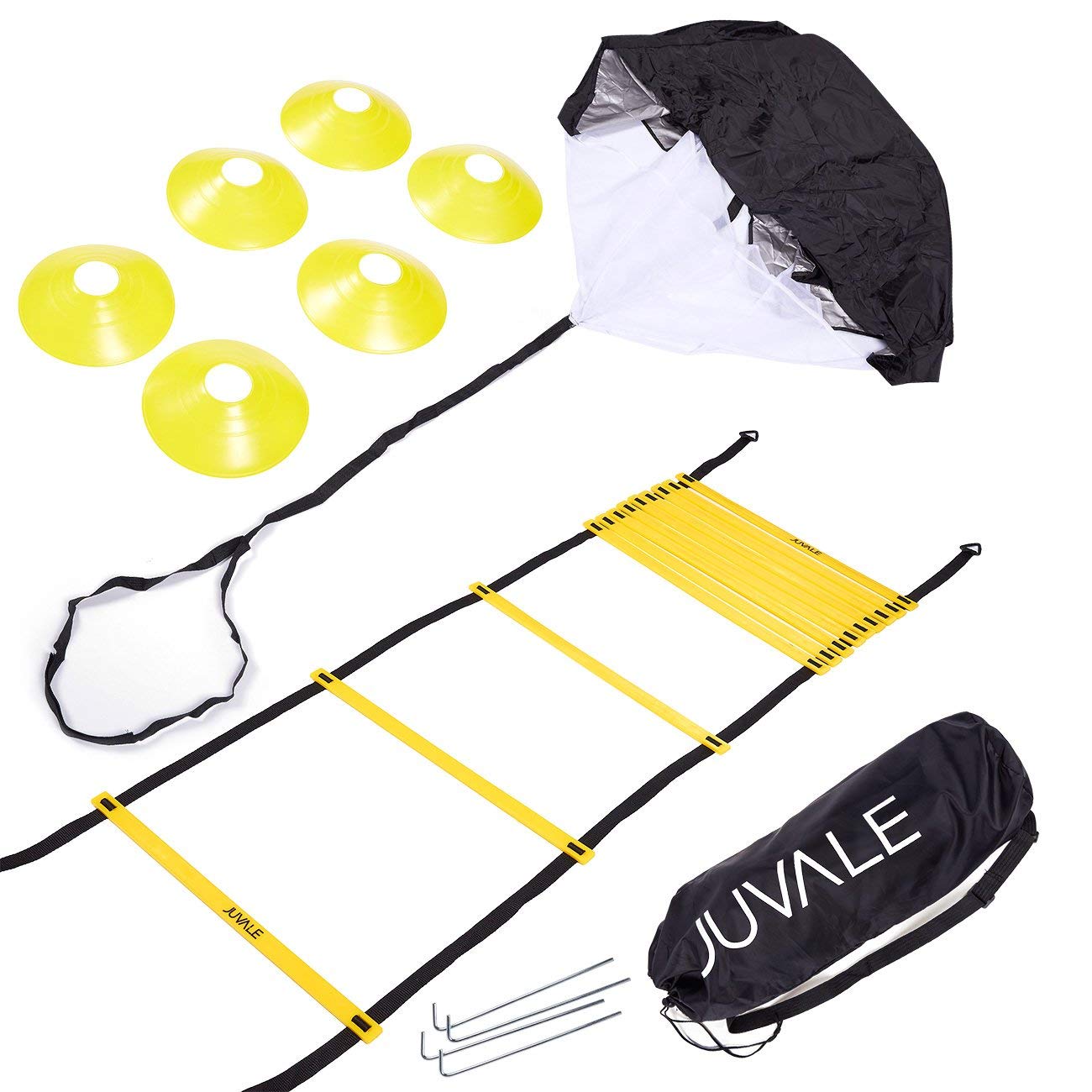12 Exercises For Developing Speed For Youth & High School Athletes
Speed is essential to athletes competing in most sports. Medically and physically, speed is the muscles’ ability to create power, which is related to strength. In addition to speed, agility is vitally important. For example, it’s crucial for football players to be able to elude tacklers and also to withstand blows while being brought to the ground. Players with strength and agility are better able to withstand the force of a direct hit. How does one increase speed and agility? Let’s take a look at the top exercises to optimize speed and agility.
Lateral Plyometric Jumps
This exercise develops explosive-type of power, coordination, and balance using just your body weight. It’s a great exercise for any athlete that needs a combination of coordination and power. A nice alternative to this exercise is the lateral single leg hop, but be sure to be sufficiently warmed up before attempting either exercise.
Plyometric Agility Drill
Begin by placing numerous small agility hurdles about two feet apart. With legs at shoulder width, being jumping upward and forward with the goal of clearing every hurdle. Try to land softly on the balls of your feet. Repeat several times on each foot. Jumping off one or both feet help develop foot speed, agility, and coordination.
High-Knee Drills (Running Forward)
To perform this exercise, run with high knees forward through the ladder, landing in every space on the ladder. The drill is simple in concept, but proper form is needed for optimum results. Land on the balls of your feet and push forward with your arms. This is a great agility training exercise to enhance coordination of the feet.
Dot Drills
The dot drill helps improve overall leg, knee, and ankle strength which adds stability needed for sports such as basketball and soccer. To successfully perform the dot drill, put a small “X” on the ground in dots that resemble the number five on a die. Jump from dot to dot with both feet at once. Then perform the same drill one foot at a time, following a specified pattern.
Jump Box Drills
With the use of a VertiMax 8, begin stepping with medium to high resistance. Making sure to keep your knees over your toes, jump quickly and as high as possible. Concentrate on landing on the balls of your feet. This drill is excellent for the hamstring, quads, and glute muscle groups.
Lateral Running
Keep a low center of gravity and quickly step through a ladder one foot at a time, inside the rung of the ladder. Be sure to land on the balls of your feet. Repeat the process from right to left and then left to right. This drill improves stability in the knees and ankles.
Shuttle Runs
For those that participate in stop-and-go sports such as hockey, basketball, and soccer, the shuttle run is one of the best agility exercises. To begin, places two markers about 25 yards apart. Sprint from one marker to the other and back and repeat up to eight times. You can add variety to this exercise by going side-to-side, back-to-front or touch marker before returning.
Cone Drills
This drill is an extremely popular drill among professional coaches and trainers. It helps develop quick change of direction and speed. After setting up the cones, start in a three-point stance. Stay low for the first five yards, touching the line at the center cone, then immediately return to the starting cone, touching the line using the same hand. Sprint back to the center cone, planting off inside foot and perform a figure-eight around the end cone. Sprint back to the starting line and repeat up to five times.
Deceleration Drills
Many injuries occur when slowing down from running or landing after a jump. A drill to teach proper deceleration is to jump as high as possible on one leg and land on the same leg. Lower the opposite foot very slowly to the ground and lower at the same rate into a squat position. Jump off the same leg and repeat the exercise up to eight times.
Lunges For Speed
The main muscles worked in this total body exercise are those in the lower leg, hamstrings, glutes, and quadriceps. The upper body and core help stabilize the body. This exercise is fundamental in developing stability, mobility, and coordination. Be sure your knee does not go over the toe or turn inward. The middle of the thigh should be parallel to the ground when stepping outward. Repeat ten times per leg.
Planks and Side Planks
A great overall core exercise, planks work the abdominals, hips, lower back, and glutes. This helps increase overall strength, stability and endurance, which are keys to athletes in any sport. The main thing to remember is to keep the back straight and helps level. Start with 30 seconds for each plank and 15 for a side plank. Try to work your way up in time, adding 15 seconds at a time.
For Kids, Let Them Be Kids
Although this isn’t a specific exercise, it’s important for beginning youth athletes to just remain active. The other exercises are fine and should be incorporated into a routine, but let kids just play. Running around while playing dodgeball, kick ball, or even a game of tag helps increase coordination and overall agility and stamina. It is also more fun for kids than drills, which will keep kids active.




